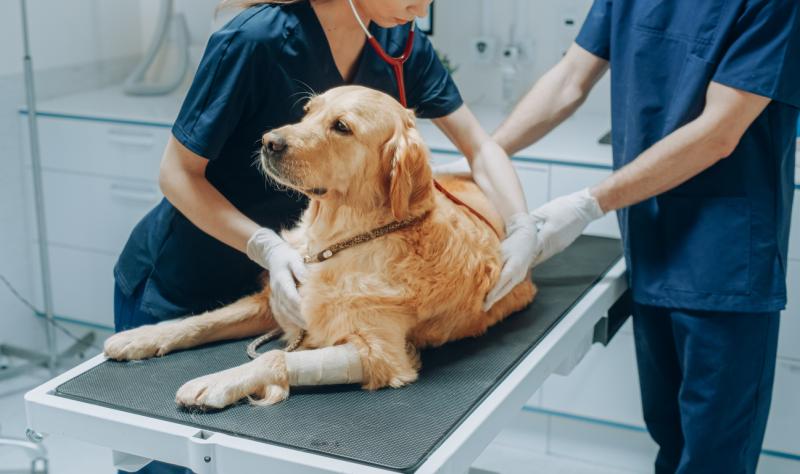Investigations into Multidrug-Resistant Infections: A One Health Perspective
Recent investigations in Massachusetts have uncovered a troubling connection between infections caused by multidrug-resistant bacteria in humans and their pets. Researchers from the University of Pennsylvania and Tufts University highlighted the significance of these findings in the journal Clinical Infectious Diseases, suggesting a potential avenue for transmission between animals and their owners. This fresh perspective emphasizes the need for integrated healthcare approaches known as "One Health," which recognizes the interdependence of human, animal, and environmental health.
The Genesis of the Investigations
The two-fold investigation began in late 2022 when a veterinary teaching hospital in Worcester County identified a troubling cluster of carbapenemase-producing Escherichia coli infections in cats and dogs. This marked a concerning first for the facility, as these infections had previously been associated primarily with hospital patients. Concurrently, a separate cluster of human infections arose months later within the same geographic area, raising questions about a possible link.
Initially, the two outbreaks appeared unrelated. The breakthrough came when researchers conducted molecular analysis of the bacterial samples. Coauthor Stephen Cole, a veterinary microbiologist, recounted, "Once we put the isolates into the same database, that’s when we discovered that they all clustered together." This revelation underscored the interconnectedness of animal and human health and pointed to a shared lineage of the bacteria in question.
Understanding Carbapenemase-Producing Enterobacterales (CPE)
Carbapenemase-producing Enterobacterales (CPE) are a class of pathogens notorious for evading treatment options. The World Health Organization and the U.S. Centers for Disease Control and Prevention (CDC) have designated them a high-priority threat due to their capacity to cause serious infections, particularly in hospital settings. Recent CDC reports indicate a growing prevalence of CPE infections over the past five years, especially those linked to New Delhi metallo-beta-lactamase (NDM) genes.
These bacteria possess the means to share their resistance through mobile genetic elements, raising alarms about their potential spread from healthcare facilities into community environments, including homes shared with pets. Strikingly, while the veterinary community is becoming increasingly aware of CPEs, many veterinarians remain unfamiliar with these pathogens.
The Role of the Veterinary Hospital
At the center of the investigation, the veterinary hospital conducted environmental assessments that revealed contamination on various surfaces and the presence of CPE in some hospitalized animals. Samples from these environments were sent for additional testing to a specialized lab at the University of Pennsylvania, where whole-genome sequencing (WGS) was employed for further analysis.
The investigation was broadened when researchers from the Massachusetts State Public Health Laboratory reported human infections linked to the same lineage of bacteria identified in the affected animals. However, initial inquiries into the human cases yielded little insight into how these infections were transmitted since the patients had no discernible links to each other.
Uncovering the Hidden Connection
The turning point came when the sequenced bacterial isolates were entered into national databases for deeper analysis. Within this shared data, researchers found that the human, animal, and environmental bacterial isolates exhibited minimal genetic variation, clustering within just a few single-nucleotide polymorphisms. This connection marked a critical revelation in the path of understanding transmission dynamics.
Further investigation through follow-up interviews with the human patients unveiled an unexpected link: all three individuals had pets that had received care at the veterinary hospital during the CPE outbreak. Though the pets had not been screened for these bacteria, the circumstantial evidence suggested that their close contact with the veterinary facility was sufficient for transmission.
Connecting Humans, Animals, and Environmental Health
The concept of One Health emphasizes the interrelatedness of human, animal, and environmental health. The findings in Massachusetts resonate with previous studies demonstrating that resistant bacteria can indeed bridge the gap between pets and their owners. For example, analyses from the Netherlands highlighted that some pet owners and their dogs shared near-identical drug-resistant E. coli isolates.
Researchers believe that this case showcases the need for enhanced collaboration between human and veterinary health sectors. Ian DeStefano, clinical professor at Tufts University, emphasized, "Given the contact between large numbers of animals at parks, veterinary hospitals, and other venues, the potential for resistant bacteria to propagate between pets and humans is significant."
Improving Surveillance and Response
To effectively address the issue of CPE transmission, researchers advocate for heightened surveillance of these pathogens in both veterinary and community settings. Collaborative frameworks between public health departments and animal health authorities could foster real-time monitoring and testing, potentially limiting the spread of multidrug-resistant bacteria.
The integration of companion animals into considerations of human health could also be instrumental. Both Cole and DeStefano stress that understanding the broader ecosystem of health—where humans and pets interact—will play a critical role in combating antimicrobial resistance.
In the face of such findings, the call for an integrated response is urgent. Not only does microbial resistance impact human health, but it threatens the well-being of our pets. As Cole aptly put it: "We know pets help us live happier, healthier lives in general. So AMR is not just a threat to the health of people; it’s a threat to the health of our pets, too."



